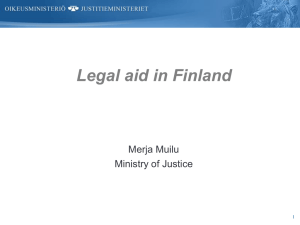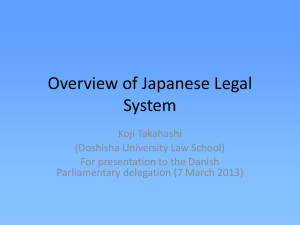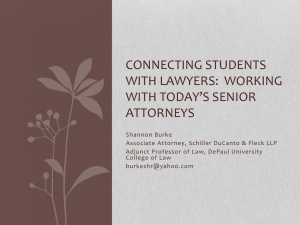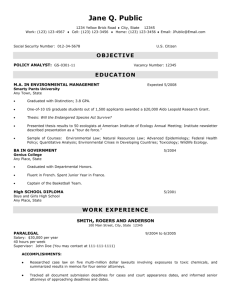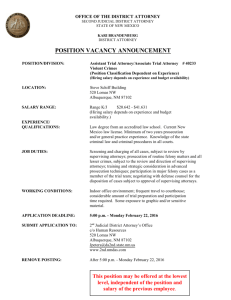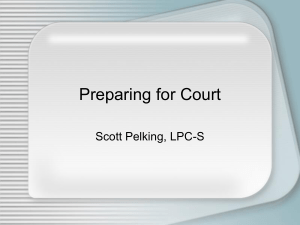CHAPTER TWO
advertisement
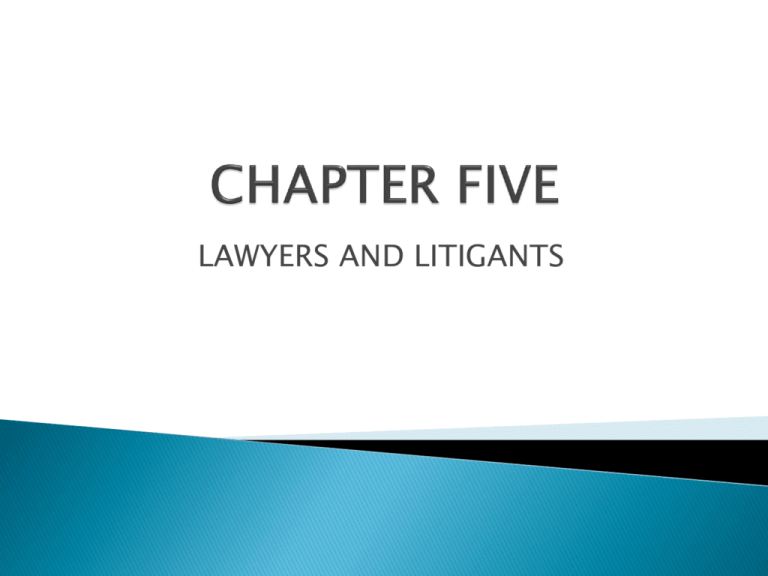
LAWYERS AND LITIGANTS Prosecuting and defense attorneys (criminal) Plaintiffs’ and defense attorneys (civil) Groups and individuals represented Laws created and administered by tribal leaders Informal and ad hoc decision-making Lack of court systems and attorneys Cases presented by orators Advanced agrarian and early industrial societies Emergence of police, judge, and attorney roles Attorneys trained through tutelage and apprenticeships U.S. system mirrored British system Emergence of law schools in late 1700’s and early 1800’s Institutionalized and formal legal training University education required Bar exam must be passed for law license 200 ABA-accredited law schools 38 unaccredited law schools Attorneys find employment in a wide variety of settings Practicing Attorneys 74% in private practice Government agencies or private industry Judges and legal educators Legal aid or public defenders Nationwide trend toward larger firms Appealing earning potential Variation based upon location, firm size, field of law Median salary is $110,590 Large demand for attorneys and legal services 2,344 prosecutors offices 78,000 employees nationwide Represent the people of the state in some misdemeanor and all felony criminal cases Variance in title and job responsibilities Represent the people in bringing charges against criminal defendants Responsibilities Receive cases from law enforcement Review cases for legal sufficiency Case screening Area of tension between law enforcement and prosecutors Advise grand jury Try criminal cases throughout all stages of judicial proceedings U.S. Department of Justice and Attorney General Cases from the District of Columbia Cases from the Office of Civil Rights United States Attorneys Handle most federal prosecutorial work Appointed by the President and confirmed by the Senate Serve at the pleasure of the President and Attorney General Responsibilities Prosecution of cases brought by the U.S. government Handle civil cases in which the federal government is a party Collect administratively uncollectable debts owed to the government Counsel clients Develop legal strategies Act as mediator and negotiator Judges Clients Prosecuting attorneys Give case appraisals Promote justice Less appealing clientele Potential for poor reputation Wide variety of compensation Lower pay than civil attorneys Stratification Law firm Practice Background Guaranteed by the 6th Amendment Extends only to criminal cases Applicable to the states (Powell) Applies to all felony cases (Gideon) Applies to all cases where there is a possibility of incarceration (Argersinger) Applies at all critical stages of criminal proceedings (United States v. Wade) Private Retention Public Defenders Voucher Systems Assigned Counsel Contract Systems Legal Clinics Legal Aid Societies Attorney is selected by the defendant Expenses are paid out of pocket Used by those with financial resources Government attorneys provide legal services to indigent defendants Criteria for eligibility Income level Public assistance Ability to post bond Federal poverty guidelines Judge’s discretion State and federal public defenders Features Smaller office staff Recent law school graduates High rate of attorney turnover Little difference in case outcome Indigent defendants are issued a voucher worth a certain amount Defendant selects an attorney who will accept the voucher Gives the defendant the ability to choose their own attorney Dominant form of legal defense Case appointment from a list of private attorneys Attorneys paid a flat fee or by billable hours Variety in quality of representation Panel attorneys are utilized in federal courts Attorneys contract with a funding source Provide court-appointed legal representation Either stand-alone systems or in conjunction with public defender Handle overflow or conflict cases for public defender Operate within law schools Second and third year students represent clients Selected legal matters Cases are supervised Coordinate time donated by lawyers Pro bono legal work Concern with undermining other lawyers’ earnings No evidence that one method of selection is better than another Little difference in case outcome for appointed or privately retained attorneys No definite criteria for attorney competence Factors for attorney competence assessment Defendant must be able to point to a specific procedural error The action or failure to act must prejudice the case’s outcome More appealing cases More financially rewarding Frequency with which parties appear in court One-shotters: litigants that file suit once or very infrequently Repeat players: litigants that frequently have business in court and file lawsuits often Number of parties involved in the dispute
